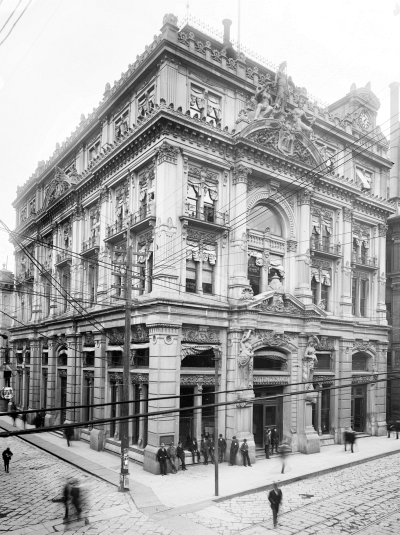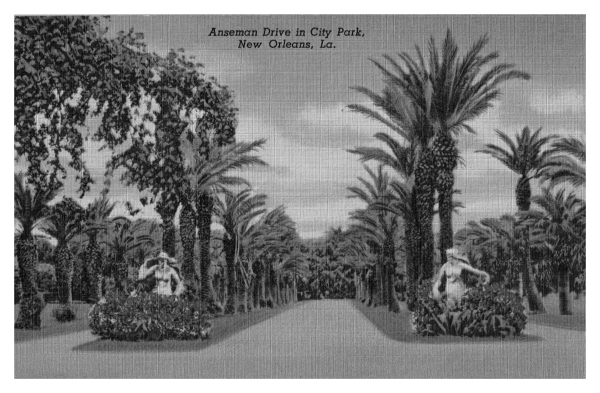|
Today in New Orleans History |
|
|
December 30


 Storyland Dedication Brothers John and Harry Batt Jr. had operated non-lucrative childrens rides in City Park since the late 1940s before
Harry Sr envisioned Storyland. Agreeing to deed it to the city if he was allowed to choose its location in the park, Storyland
was dedicated on December 30, 1956 to the memory of his parents. Behind it he placed six kiddie rides –
gross ride revenue soared as Storyland drew huge crowds. Storyland was restored by Friends of City Park
in 1986. 2006 brought the post-Katrina reopening of the the park's driving range Storyland, and Carousel Gardens Amusement
Park (which only ran during Celebration in the Oaks that year). Text and photos from New Orleans City Park (Images of America) by Catherine Campanella.
 

And You won't pay a penny more! To receive an update for each day in New Orleans history,
join our facebook page - Today in New
Orleans History
On December 30, 1978 the Marshall Tucker Band, Firefall, and Jay Boy Adams performed at A Warehouse. On December 30, 1977 Jerry Jeff Walker, Sea Level, and the Copas Bros. performed at A Warehouse.
|
|
|
Huey P. Long Bridge Contract Signed Southern Pacific Railroad had proposed a bridge as far back as 1892 and in 1924 the Public Belt Railroad
had commissioned Modjeski to design a bridge which was rejected by the Department of Defense. In 1926 Modjeski drew
new plans which were approved. On December 30, 1932 the Public Belt, the city, the state, and the Reconstruction Finance
Company (RFC) signed the contract for construction of the new bridge. On opening day, 1200 people rode
the Southern Pacific train across the bridge and back. Thousands watched as Long's daughter, Rose, cut the ribbon to
allow cars to take their first ride across the $13,000,000 project. Many, without automobiles, walked over the river
and back. Bands played and a pageant was presented by school students. A banquet was held
in the evening at the Roosevelt Hotel. A.D. Danziger credited Long with making the new bridge a reality. Thomas
F. Cunningham, president pro tem of the Public Belt Commission also spoke -- he had been awarded the Times-Picayune Loving
Cup in 1932 for his 31 years of efforts to see that a bridge be built to what some people deemed "nowhere". Another Huey P. Long bridge, at US 190 (Airline Higheay) was built in Baton Rouge in 1940. Photos
from the Library of Congress. The Pizzati Gate erected in 1910 is one of the the oldest structures in the Park. It
is located at was the main entrance at Alexander Street and City Park Avenue. Donated by Steamboat Captain Salvatore Pizzati
the gate as rededicated on October 25, 2001 in memory of Edgar A. Luminais, an original member of the Board of Commissioners.
The gas-lit ornate cast-iron Belknap Fountain (left of center) was built in 1870 by Jackson Ogden Belknap who used it primarily
as an advertising stand on the neutral ground of Canal Street until it was donated to the park. The bridge was named
in honor of Victor Anseman, the "Father of City Park". In
1904 Mother Cabrini, having heard of his generosity, called upon him to build an asylum and school for orphans to be run by
her the Missionary Sisters of the Sacred Heart. The order bought property on Esplanade Avenue near Bayou St. John on
the site of the Srickler Seed Company for $18,000 and the Pizzati donated $75,000 for the construction of the school, convent,
and apartments for the ophans. Mother Cabrini said, "I learned that Captain Pizzati and his wife always work in
concert. It was Mr. Pizzati who inspired the gift of St. Joseph's new school...Now it is Captain Pizatti himself who
conceives the thought of this orpanage and industrial school". Born on September 12, 1839 in Palermo,
Sicily, he came to the United States in 1808 as a skilled boat master. He began working in association with Captain Grande
on schooners trevelling between Spanish Honuras and New Orleans -- he was the first steamship captain to bring bananas into
the United States. He was an admiral in the Honduran navy and commodore of the Oteri-Pizzati Steamship Company which,
when sold to United Fruit Company in 1899, included ten ships, plantations, and plants. He was a director of Whitney Central
Bank and Interstate Bank and owner of Columbian Brewery and Southern Insurance Company. He owned three plantations in
Buras, one named for him where he cultivated 14,000 orange trees. Pizzati was honored by many, Pope
Pius X who bestowed upon him The Great Cross (Chevalier de Papa) in recognition of his charitable works.
He was a commandotore of the King of Italy, an admiral in the Honduran navy, a colonel of the staff of Governor J. Y. Sanders,
and a special officer of the New Orleans Pollice force (his obituray stated that he knew and was known by all of the
local officers). The City Park gate was his last public donation before his death on Thursday, December
30, 1915. He was survived by his wife Frances Vallenzano and adopted son Marco Antonio Pizzati at 2502 Canal Street. The Pizzati gate was rededicated in 2001 in honor Edgar Alphonse Luminais, one of the original Lower City
Park commissioners (Audubon Park was then called "Upper City Park" and City Park wass the "Lower City Park").
Luminais was on the board in 1891 when the bylaws were drafted for the City Park Improvement Association which officially
changed the name and acquired control of the park from the City of New Orleans. He served alongside Victor Anseman, the "Father
of City Park" (who was given a $40 salary as the park's keeper). During his time as a commissioner when the park
was largely undeveloped, Luminais oversaw the construction of a fence in the front of the park, the addition of over 50 iron
benches, an octagon-shaped dance pavilion, a ladies rest area near the gate, a mens rest area near Bayou Metaire, a foot bridge
across the bayou, the addition of 50,000 orange, lemon, and fruit trees as a source of revenue, entertainment for the same
purpose, the addition of cattle pasturing in the rear for a fee, a prohibition against shooting and trapping in the park,
and a long-range plan for improvement. During the 1920s visitors entering the Pizzati Gate would be greeted by these one-hundred year-old
bare-breasted ladies (left) on Anseman Avenue. They had originally hovered high above the main entrance to the New Orleans
Cotton Exchange building (above) which was built in 1823 but being readied for demolition in 1920. They were acquired by
the park along with the granite caryatids which flanked the exchange's door and the standing figure between the two ladies
in the photograph. Their tenure in the park was brief – some citizens were outraged. The ladies went on to reside
at Metairie Cemetery and the caryatids can still be seen near the cemeteries on City Park Avenue. The fate of the top
center figure is unknown. Photos from the Louisiana Digital Library. Text from New Orleans City Park (Images of America) by Catherine Campanella

To receive an update for each day in New Orleans history,
join our facebook page - Today in New
Orleans History.
Analytics |
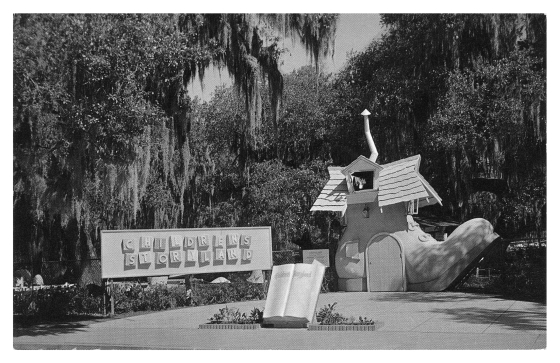 During the 1950s Storyland in City Park was filled with Nursery Rhyme figures created by a young man who would
become the most noted Mardi Gras float builder in the city; it was funded by an older man who owned and operated the most
popular amusement park in the south.
During the 1950s Storyland in City Park was filled with Nursery Rhyme figures created by a young man who would
become the most noted Mardi Gras float builder in the city; it was funded by an older man who owned and operated the most
popular amusement park in the south. 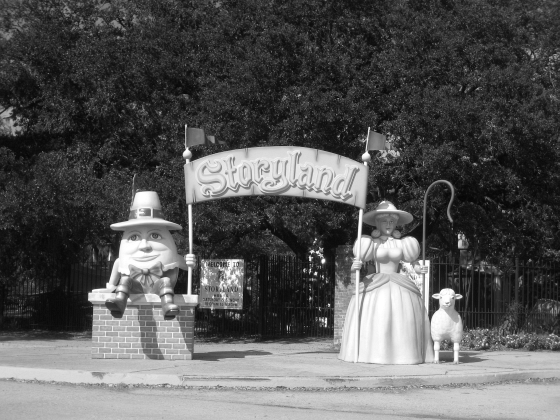 Storyland was populated by nursery rhyme characters, some hanging in the ancient oaks and all designed by Blain Kern. This
enchanting world of plaster and cement figures included Captain Hook and his ship, the Old Woman and her shoe, Pinocchio and
the whale (with a gaping jaw to be walked into), Jack & Jill on their hill, Cinderella in her Pumpkin Coach (children
could join her), King Cole in his Castle, Red Riding Hood and the wolf, Hansel and Gretel, the Little Prince, Little Miss
Muffet, Alice in Wonderland. the Three Pigs, Snow White, Hey Diddle Diddle, and Humpty Dumpty (whose “wall” was
Storyland's maintenance shop). Built adjacent to the Flying Horses at a cost of $25,000, Storyland attracted ½ million
visitors in 1958 when Park Amusement Company was managed by Frank Davis. It is seen here in 1960 (right) and 2007 (left
photo by Infrogmation).
Storyland was populated by nursery rhyme characters, some hanging in the ancient oaks and all designed by Blain Kern. This
enchanting world of plaster and cement figures included Captain Hook and his ship, the Old Woman and her shoe, Pinocchio and
the whale (with a gaping jaw to be walked into), Jack & Jill on their hill, Cinderella in her Pumpkin Coach (children
could join her), King Cole in his Castle, Red Riding Hood and the wolf, Hansel and Gretel, the Little Prince, Little Miss
Muffet, Alice in Wonderland. the Three Pigs, Snow White, Hey Diddle Diddle, and Humpty Dumpty (whose “wall” was
Storyland's maintenance shop). Built adjacent to the Flying Horses at a cost of $25,000, Storyland attracted ½ million
visitors in 1958 when Park Amusement Company was managed by Frank Davis. It is seen here in 1960 (right) and 2007 (left
photo by Infrogmation). 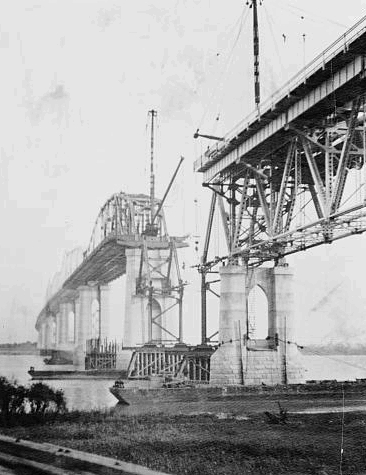
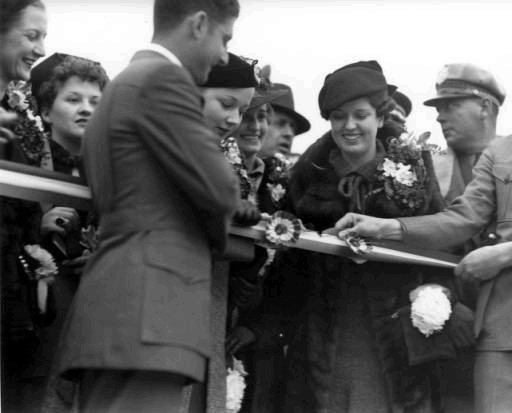
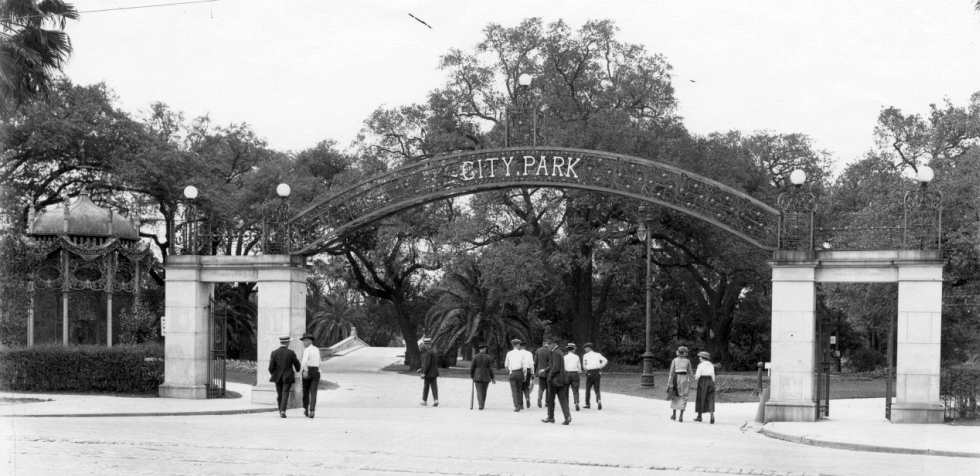
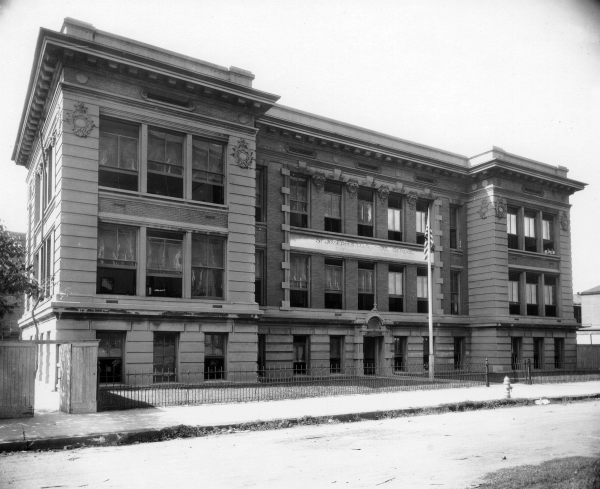 In 1903, the benefactor of this beautiful gate presented a plan for the construction of Saint Joseph's Parochial School at
417 South Roman Street (right), along with the $70,000 cost to build it -- the largest donation to Catholic education yet
in the South. Speaking of his wife and himself, Pizzati said, "We have no children. God has blessed us abundantly.
Let us do for the children of others. Together we make this gift". The school opened in 1904, able to accommodate
800 students. His name “Captain Salvatore Pizzati" was inscribed in stone above the main entrance.
In 1903, the benefactor of this beautiful gate presented a plan for the construction of Saint Joseph's Parochial School at
417 South Roman Street (right), along with the $70,000 cost to build it -- the largest donation to Catholic education yet
in the South. Speaking of his wife and himself, Pizzati said, "We have no children. God has blessed us abundantly.
Let us do for the children of others. Together we make this gift". The school opened in 1904, able to accommodate
800 students. His name “Captain Salvatore Pizzati" was inscribed in stone above the main entrance. 